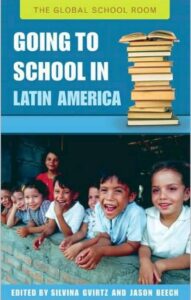Schooling in Peru
Going to School in Latin America
| Year | : | 2008 |
|---|---|---|
| Author/s | : | Maria Balarin |
| Area/s | : | Education and learning, State reform and public institutions |
Balarin, M. (2008). Schooling in Peru. En S. Gvirtz y J. Beech (Eds.), Going to School in Latin America (pp. 275-301). Westport, Connecticut: Greenwood Publishing Group.
It is in this sense that the history of education in Peru can be said to have been dominated by contradictory dynamics. On one hand, increasing educational expansion, especially during the second half of the twentieth century, has been associated with an extension of social opportunities. On the other hand, the education system, since its inception, has been linked to exclusionary dynamics that have often curtailed the possibilities of personal and social advancement through education. Schools have thus played a paradoxical role. While being associated with the spread of knowledge and therefore of opportunities, they have, at the same time, contributed to exclude vast majorities of the population. The exclusions that operated through the education system, first by limiting access and more recently by providing an education that is highly deficient in quality, are undeniable. However, it is also patent that education has helped to open up opportunities for all. The following pages will offer an analysis of the historical development of the Peruvian education system with an emphasis on these contradictory dynamics and on the changes that education has been related to.







